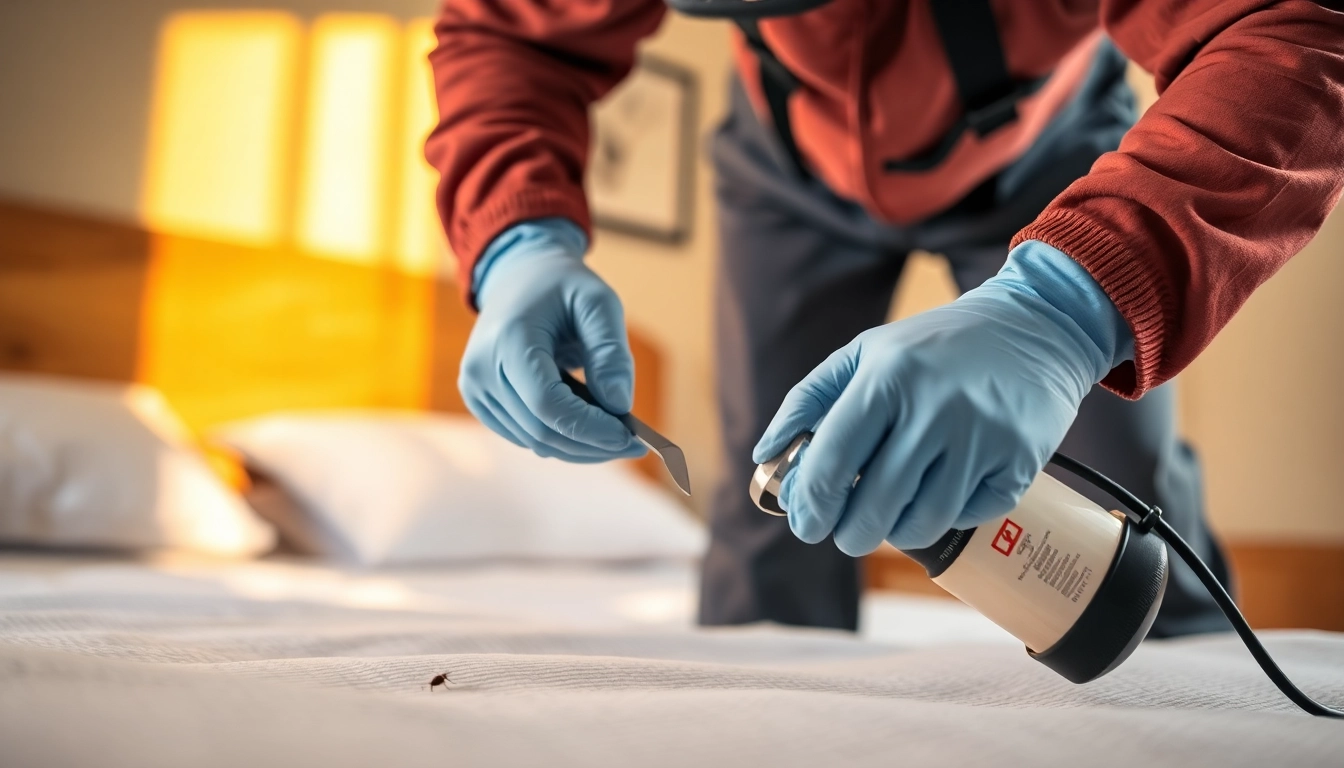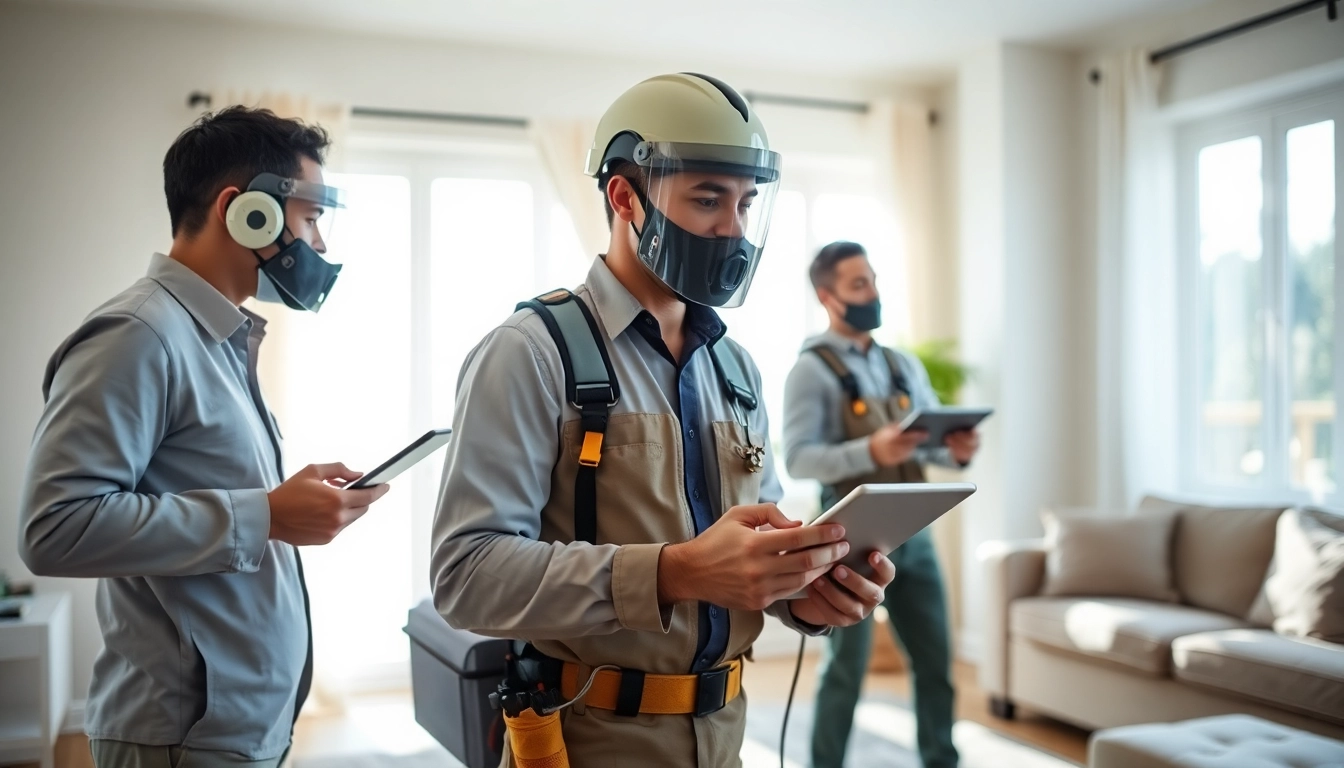The Basics of Bed Bug Pest Control
Bed bugs are notorious pests that can invade your home, wreaking havoc and causing sleepless nights. Effective bed bug pest control is essential for maintaining a comfortable and hygienic living environment. In this comprehensive guide, we will explore everything you need to know about bed bugs, from understanding their behavior to implementing both preventive measures and effective treatment options.
Understanding Bed Bugs
Bed bugs, scientifically known as Cimex lectularius, are small, wingless insects that feed exclusively on blood. They are reddish-brown in color and about the size of an apple seed, making them difficult to spot. These nocturnal pests are most active during the night, feeding on their hosts while they sleep. A mature female bed bug can lay hundreds of eggs in her lifetime, leading to rapid population growth if not controlled promptly.
Bed bugs are expert hitchhikers and can easily be transported from one location to another, such as hotels, public transport, and even at social gatherings. This ability makes them particularly challenging to manage, as a small infestation can quickly escalate into a larger problem if not addressed early.
Common Signs of Infestation
Recognizing the signs of a bed bug infestation is crucial for early detection. Some common indications include:
- Bite Marks: Bed bug bites often appear as small red, itchy welts on the skin, typically arranged in a line or cluster.
- Blood Stains: Small blood stains on your sheets or mattress can indicate that bed bugs have been feeding while you sleep.
- Exoskeletons: As bed bugs grow, they shed their skin. Finding these exoskeletons in your bedding or furniture can signal an infestation.
- Dark Spots: Fecal spots or dark stains on your mattress, pillows, or furniture can indicate that bed bugs are present.
- Musty Odor: A strong, musty smell in your bedroom may indicate a large infestation, as bed bugs release pheromones that produce this distinct scent.
Health Risks Associated with Bed Bugs
While bed bugs are not known to transmit diseases, their bites can lead to various health issues. Most commonly, people experience allergic reactions to bed bug bites, which can result in redness, swelling, and itching. In more severe cases, excessive scratching can lead to secondary infections. Furthermore, the psychological impact of dealing with an infestation can include anxiety, insomnia, and general distress, as the presence of these pests can greatly affect one’s quality of life.
Effective Treatment Methods
Addressing a bed bug problem requires a comprehensive approach that combines multiple treatment methods. Both professional pest control services and do-it-yourself (DIY) techniques can be effective when used appropriately.
Professional Extermination Services
Hiring a professional pest control service is often the most effective way to eliminate a bed bug infestation. Experts employ various methods, including:
- Heat Treatment: This method involves raising the temperature of the infested area to a level that is lethal to bed bugs. Professionals use specialized equipment to ensure that every corner of the room reaches the required temperature.
- Chemical Treatments: Licensed exterminators may use insecticides designed specifically for bed bugs. These treatments can kill bed bugs on contact and have residual effects that eliminate any bugs that emerge later.
- Integrated Pest Management (IPM): This is a holistic approach that combines chemical and non-chemical methods, focusing on prevention as well as eradication. IPM techniques include thorough inspections, proper sanitation, and regular monitoring and maintenance.
Do-It-Yourself Treatment Techniques
For those looking to tackle a bed bug issue independently, several DIY approaches can be effective, although they may require more effort and patience than professional services:
- Heat: Using steam cleaners on infested areas can effectively kill bed bugs and their eggs. Steam at a temperature of at least 130°F (54°C) penetrates cracks and crevices where bed bugs may hide.
- Vacuuming: Vacuuming infested areas thoroughly can remove bed bugs and their eggs. Be sure to dispose of the vacuum bag immediately after use to prevent re-infestation.
- Diatomaceous Earth: This natural powder can dehydrate and kill bed bugs when applied to infested areas. It’s safe for humans and pets when used as directed, making it an appealing option for DIYers.
Chemical vs. Non-Chemical Solutions
The choice between chemical and non-chemical solutions depends on the severity of the infestation, personal preferences, and safety concerns. Chemical treatments can offer quicker results but often require multiple applications and can pose potential health risks. Non-chemical solutions, including heat and diatomaceous earth, are generally safer but may take longer to achieve complete eradication. Combine both approaches to maximize effectiveness and ensure comprehensive control over the infestation.
Preventing Future Infestations
After successfully eliminating bed bugs, taking steps to prevent future infestations is crucial. Here are some effective strategies:
Essential Home Maintenance Tips
Maintaining a clean and clutter-free environment significantly reduces the chances of a bed bug infestation. Regularly washing and drying bedding at high temperatures can help eliminate any latent bed bugs or eggs. Additionally, inspect secondhand furniture thoroughly before bringing it into your home and consider encasing mattresses and box springs with protective covers.
Travel Precautions to Avoid Bed Bugs
When traveling, it is essential to be vigilant about bed bugs. Always check hotel rooms for signs of bed bugs before settling in. Use luggage racks instead of placing your suitcase directly on the bed or floor. After traveling, wash all clothing immediately upon returning home, even if you haven’t worn them. Consider placing your suitcase in a hot, dry area for a few hours to kill any potential bugs that may have hitched a ride.
Routine Inspections and Early Detection
Regular inspections of your home can help catch potential infestations before they escalate. Look for the signs outlined earlier, especially in and around beds, along seams of mattresses, and in cracks of furniture. Establishing a routine inspection schedule helps maintain a proactive approach to pest management.
Cost Considerations for Bed Bug Control
The cost of bed bug control can vary significantly based on several factors, including the size of the infestation, the methods used, and the professional service selected. Understanding these costs can help you make informed decisions.
Understanding Extermination Pricing
Professional pest control services often charge based on the level of infestation and the treatment methods employed. On average, homeowners can expect to pay between $300 and $1,500 for comprehensive bed bug treatment. Most companies will provide estimates that include inspections, treatment, and follow-up care. It’s essential to compare prices and services before making a decision.
Cost-Effective DIY Alternatives
DIY methods can be significantly more affordable than professional services, with costs typically ranging from $50 to $200 depending on the products purchased. However, consider the time invested and the potential need for repeat applications when deciding on this route. In some cases, using both DIY methods and professional assistance can be the most effective and economical solution.
Ensuring Value for Your Investment
Regardless of the method chosen, ensuring value for your investment involves choosing a reliable pest control service and following up with preventive measures. Look for companies with good reviews, proper licensing, and certification. Moreover, understanding that resolving bed bug issues requires persistence, patience, and, often, a combination of strategies will help you achieve long-term success.
Choosing the Right Pest Control Service
Selecting an appropriate pest control service can make a significant difference in effectively managing a bed bug infestation. Consider the following factors when making your choice.
Researching Local Exterminators
Begin by researching local pest control companies that specialize in bed bug treatments. Read reviews, seek recommendations, and ensure that the service has a good reputation for effectively managing bed bug infestations. Many companies will offer a free consultation or inspection, allowing you to gauge their expertise and approach before committing.
What to Expect During a Consultation
During a consultation, be prepared to discuss the signs and specifics of your infestation. A qualified exterminator will conduct a thorough inspection of your home to assess the extent of the problem. Be sure to ask about their treatment methods, timeline, and any preparations you need to make before their services commence.
Questions to Ask Before Hiring
Before hiring a pest control service, ask the following questions:
- What treatment methods do you use for bed bugs?
- Are your technicians licensed and insured?
- How many visits will be required to eliminate the infestation?
- Do you provide any guarantees or warranties for your services?
- What preventative measures do you recommend after treatment?
Ultimately, choosing the right pest control service requires thorough research and a clear understanding of your specific needs. With the right knowledge and resources, you can effectively manage and protect your home from bed bugs.



